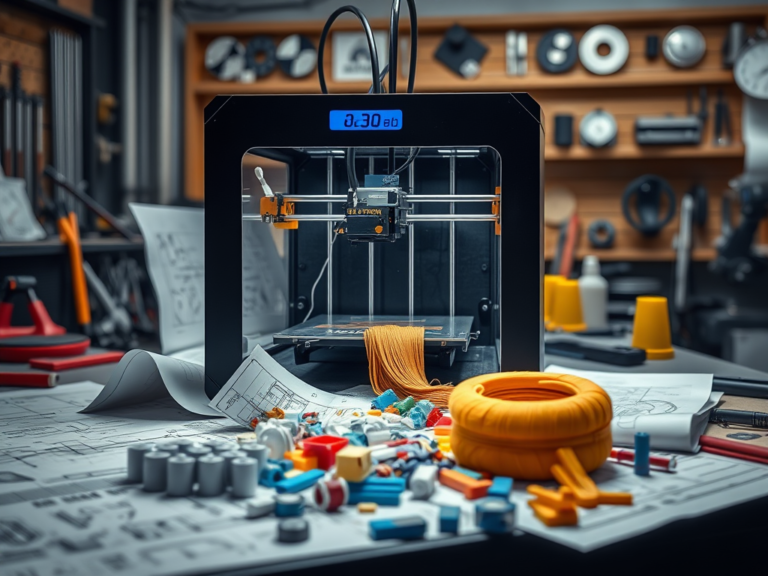
Introduction
3D printing has revolutionised prototyping, manufacturing, and DIY projects. However, occasional issues such as 3D print leaks can be frustrating. The VXLabs 3D print leak problem has become a notable discussion in the 3D printing community. Whether you’re experiencing filament leakage, resin spills, or inconsistent layer adhesion, understanding the root causes and solutions is crucial. This guide covers everything you need to know about VXLabs 3D print leaks, including common causes, effective prevention strategies, and step-by-step fixes to ensure high-quality prints every time.

What is a VXLabs 3D Print Leak?
A 3D print leak occurs when unwanted material oozes or escapes from unintended parts of the printer, leading to imperfections or failures in the final print. VXLabs, known for its contributions to open-source 3D printing, has documented various leak-related issues faced by enthusiasts and professionals alike.
Types of 3D Print Leaks
- Extruder Leakage – Filament oozing from unintended gaps.
- Hotend Leak – Molten filament escaping between the nozzle and heat block.
- Resin Printer Leak – Resin spills due to cracks or tank failure.
- Over-Extrusion – Excess filament output causing blobs and defects.
Common Causes of 3D Print Leaks
Understanding the root cause of leaks can save both time and material. Here are the most common reasons:
1. Poorly Sealed Nozzle
- Loose nozzle installation leads to melted filament seeping out.
- Incorrect torque settings can cause tiny gaps, worsening over time.
2. Worn or Defective PTFE Tubing
- In Bowden setups, PTFE tubes that degrade over time may allow filament leakage.
- Improperly seated tubes create small gaps where melted plastic escapes.
3. Incorrect Temperature Settings
- High temperatures can cause excessive filament flow, which may lead to leaks.
- Resin printers using improper curing times or exposure settings may cause resin seepage.
4. Poor Print Bed Adhesion
- If lawyers don’t adhere properly, excess filament can escape sideways.
- Resin pooling due to improper levelling may cause spills.
5. Overfilled Resin Tanks
- Too much resin in SLA printers may lead to unwanted drips and leaks.
- Cracked or damaged resin tanks can also cause leakage.
Preventing 3D Print Leaks
To avoid unnecessary waste and defects, consider these preventive measures:
1. Proper Nozzle Installation
- Tighten the nozzle correctly (typically 1-2 Nm torque).
- Use heat-resistant sealing compounds, such as PTFE tape or thermal paste, to secure connections.
2. Maintain Your PTFE Tubing
- Regularly inspect and replace PTFE tubes when they show wear.
- Ensure the flush tube is adequately inserted in Bowden-style extruders to prevent gaps.
3. Optimise Temperature & Flow Rate
- Use the manufacturer’s recommended temperature settings for your filament.
- Reduce the flow rate slightly if over-extrusion occurs.
- Calibrate resin exposure settings to avoid excessive liquid usage.
4. Level the Print Bed Properly
- Adjust the bed height to ensure strong adhesion of the first layer.
- For resin printers, check for even LCD screen exposure and vat alignment.
5. Monitor Resin Tank Levels
- Keep resin levels below the max fill line to prevent spills.
- Regularly inspect the resin tank for cracks and replace it when needed.
Fixing a VXLabs 3D Print Leak
If you’re already facing a leak, follow these step-by-step solutions:
1. Fixing an Extruder Leak
- Pause the print and let the hotend cool down.
- Disassemble the nozzle and check for gaps.
- Apply PTFE tape to the thread before re-tightening.
2. Repairing a Hotend Leak
- Heat the hotend to soften the stuck filament.
- Use pliers to remove the nozzle and clean the threads carefully.
- Apply high-temperature thread sealant and reinstall securely.
3. Stopping Resin Leaks
- Check the resin vat for damage and replace if necessary.
- Drain excess resin before cleaning the affected area.
- Seal minor cracks with UV-curing resin or replace the vat.
4. Correcting Over-Extrusion Issues
- Lower the extrusion multiplier in slicing software (e.g., Cura, PrusaSlicer).
- Calibrate E-steps to match filament output.
- Reduce hotend temperature slightly if necessary.
READ MORE – How to 3D Print South Park’s Towelie at Home
FAQs
1. How do I prevent filament from leaking from my hot end?
Check if the nozzle is tightened adequately against the heat break. Use PTFE tape or thermal paste for a better seal.
2. What causes a resin printer to leak?
Common reasons include overfilled resin tanks, cracked vats, and improper levelling of the LCD screen.
3. How do I fix a leaking Bowden tube?
Ensure the PTFE tube is cut cleanly and entirely inserted into the extruder. Replace worn tubes regularly.
4. Can over-extrusion cause print leaks?
Yes, too much filament flow leads to blobs and uneven layers. Adjust the flow rate and temperature settings.
5. What’s the best way to clean up resin leaks?
Use isopropyl alcohol (IPA) to clean resin spills. Always wear gloves and eye protection when handling uncured resin.
Conclusion
Dealing with VXLabs 3D print leaks can be frustrating, but with the right approach, you can prevent and fix these issues efficiently. Using excellent materials, calibrating, and proper maintenance guarantees that your prints stay leak-free and of good quality. Applying the advice from this article will save you time, money, and trouble whether you deal with FDM or resin printing.